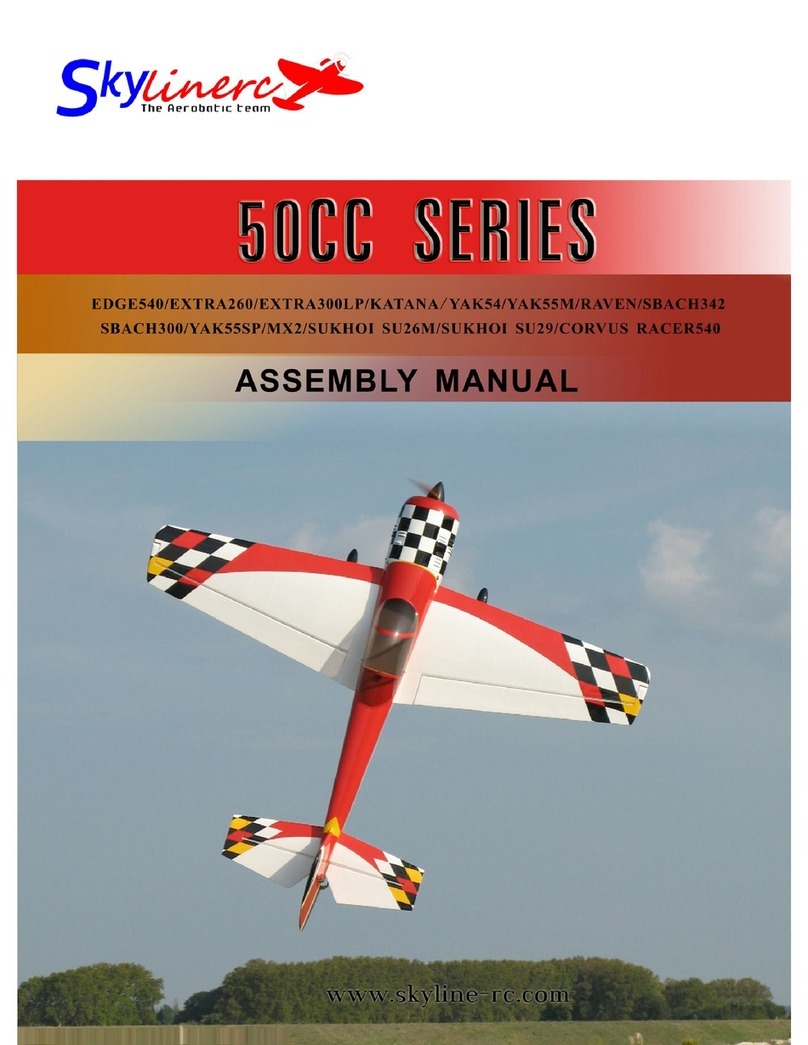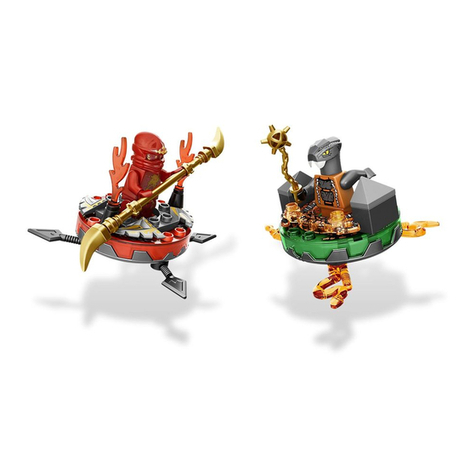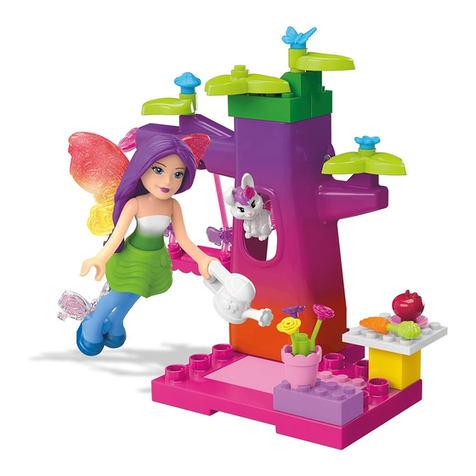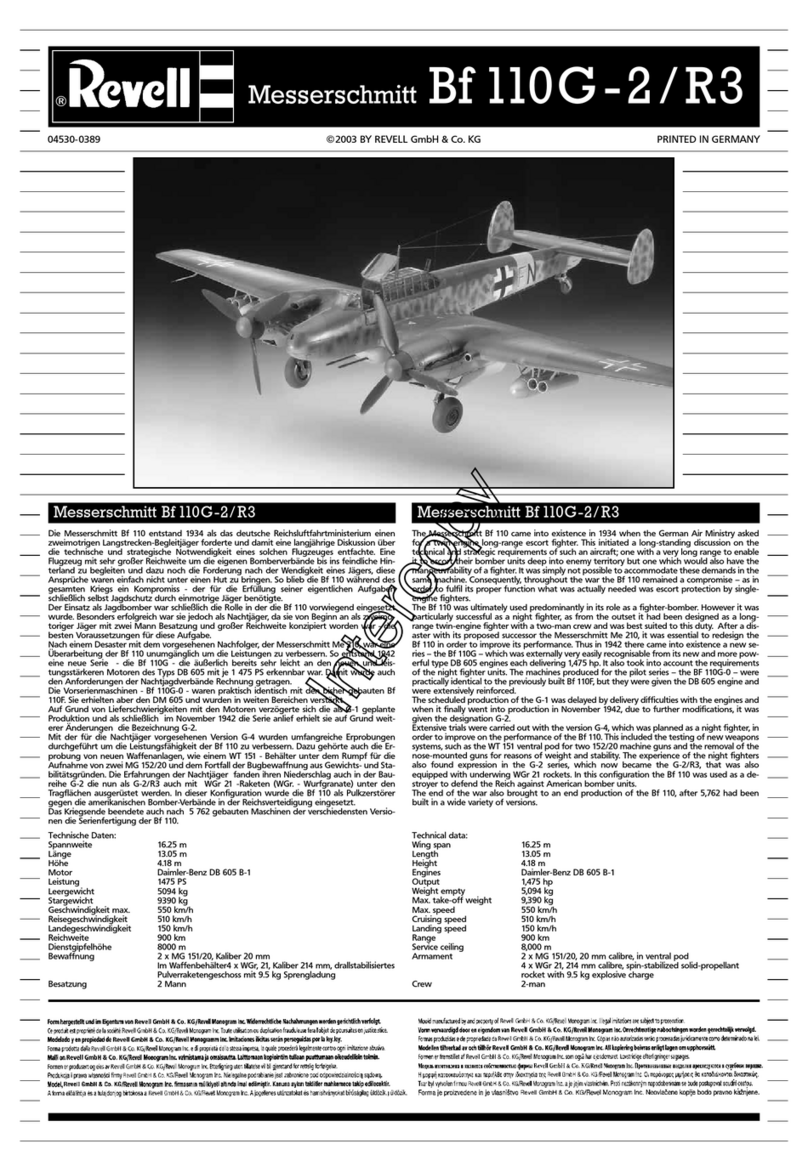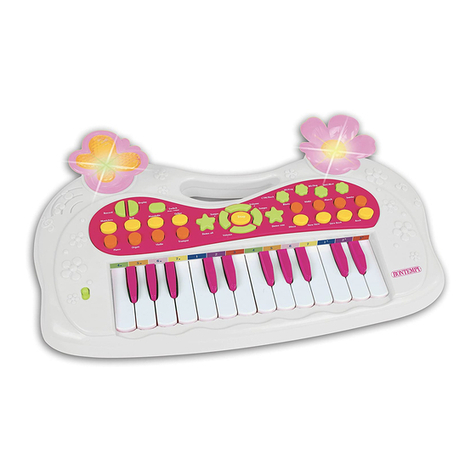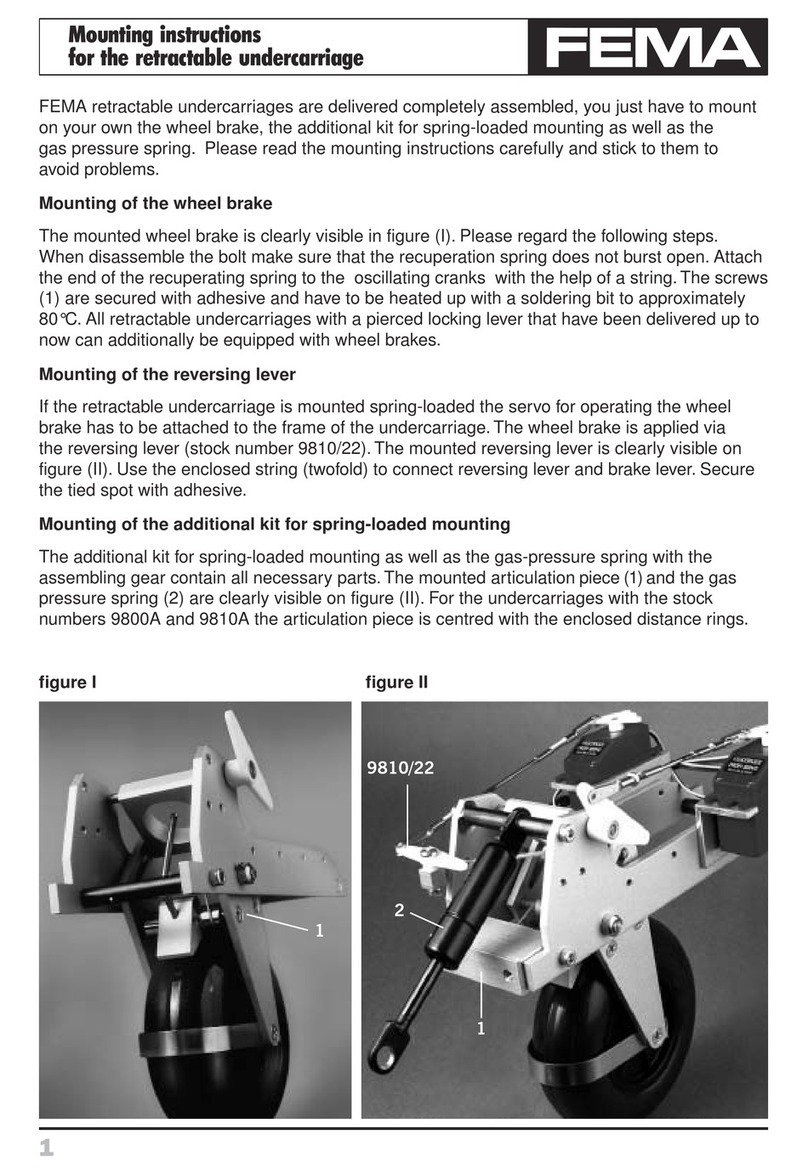Brassmasters EasiChas User manual

Brassmasters
Scale
Models
www.brassmasters.co.uk
EasiChas
Chassis and Detailing Kit for
Bachmann G2 Locomotive and
Tender
For EM and P4 Gauges only
Instructions
PO Box 1137 Sutton Coldfield B76 1FU
Copyright Brassmasters 2017

Brassmasters G2 EasiChas v1.0 1 September 2017
1 Introduction
1.1 The EasiChas frames for Bachmann G2 locomotive, based on the original concept devised by John Brighton, have been
specifically designed to allow easy conversion to EM or P4 gauge, which results in a fully sprung locomotive and tender.
Furthermore, the basic conversion can be completed without the need to solder any of the main components together.
1.2 There are various levels of conversion with the builder choosing which, of any, additional detail required beyond the basic
conversion.
1.3 Basic level of conversion makes use of:
fold up mainframes keep plate and ashpan with sprung bearings
fold up replacement tender frame with sprung bearings.
1.4 Further components are provided to add to the detail of the conversion. These are, working from the front:
replacement buffer beam
replacement buffer beam bracket
locomotive guard irons
drain cock operating linkage
replacement coupling rods –2 jointed version
replacement reach rod - both original and strengthened valve gear
sander operating linkage
replacement brake hangers and blocks
brake pull rods for single and double braked versions
cab floor
replacement tender brake gear
replacement tender guard irons
replacement tender coal rails
replacement tender frames, drag and buffer beams
lamp irons for engine and tender
replacement rear footsteps for tender cab locomotives
1.5 The replacement set of frames buffer beam etc. replaces the lower half of the Bachmann tender giving the proper
distance between the frames rather than the over wide ones on the Bachmann model. An alternative set of frames is available for
the Whale type frames with D shaped opening used on the earlier version (BC3) of the Bowen Cooke tender.
1.6 Unfortunately, it is not possible to re-use the Bachmann pick-ups on this EasiChas. However, a suggested method for
making pick-ups has been given, which has worked very successfully on the test build, although there are many other methods
which the builder may prefer to use.
1.7 Suitable wheels are available from Alan Gibson and Ultrascale. The standard replacement wheel packs with 3mm axles
are suitable for the G2 EasiChas. However, if you already have wheels with 1/8” axles, the bearings in the kit can be exchanged
for 1/8” bearings.
1.8 The earlier 3-piece coupling rods are also available from Brassmasters (ref C106).
1.9 Locomotives that can be built using the Bachmann G2 model and the Brassmasters’ EasiChas kit
The history of the LNWR 0-8-0 is long and complicated, so rather than try to include it all here, these notes deal only with the
history as it affects the locomotives that can be built from the Bachmann model and Brassmasters’ EasiChas. For the full history,
‘Eight-Coupled Goods engines’ by Edward Talbot is essential reading.
There are two different basic versions of the Bachmann locomotive, plain cab side and cab side fitted with sandbox filler, and
three different versions of the tender, plain tender, tender cab without rear steps, tender cab with rear steps. The only limitation
of locomotives that can be modelled is that the cab side sand filler was not introduced until 1946 and then only on locomotives
fitted with tender cabs and rear steps to replace the withdrawn 0-8-4 tanks at Edge Hill and Buxton, and later for other locations.
Apart from the limitation above, the Bachmann G2 can be used as a basis for any G1, G2 and G2A once fitted with Belpaire boiler
and cut down cab, both appearing from about 1924, except those fitted with steam brake.
The later batches of G1 (built in 1914 onwards) and the G2 were all built with strengthened brake gear. From 1924 strengthened
brakes were introduced on vacuum fitted locomotives. The strengthened brake gear consisted of a second brake cylinder in front
of the firebox operating the linkage on the leading two wheelsets, with the original cylinder under the cab operating the linkage on
the trailing two wheelsets. The modification commenced with the locos that had been built with vacuum brakes (G1 –LMS 9225
onwards, all G2s). As locomotives were converted from steam brake to vacuum brake most were fitted with two cylinders and the
majority were converted in the next 10 years. However, some retained steam brakes until scrapped.
The G2s were built with a modified motion with a direct drive. This was mounted higher in the frames and resulted in a cranked
reach rod in place of the straight reach rod for those locos fitted with indirect drive. From the early 1920s G1s began to be fitted
with ‘strengthened motion’ as it was known.

Brassmasters G2 EasiChas v1.0 2 September 2017
At the start of our period of interest, the G1s were fitted with three-piece rods and the G2s were fitted with one-piece jointed rods.
As time went on more locomotives were fitted with single-piece jointed rods.
G2A locomotive that appeared from 1935 were G1s that were fitted with a 175 lb/sq.in. boiler and nominally strengthened brakes
and direct motion. Some locomotives were already fitted with one or both but converted locomotives often lacked one or the other.
Various changes were introduced during the life of the locos and the most noticeable were parallel buffers (1933 onwards),
smokebox handles in place ofwheel (early WW2 onwards), strengthened buffer beam (1942 onwards) and Stanierchimney (1944
onwards). Fitting was not necessarily fast and not all locos were fitted during their life.
As for the tender, once the locos were converted to vacuum brake the locos were only paired with one of the last two designs of
Bowen Cooke tender. The Bachmann model is of the last type of Bowen Cooke tender (BC4), but the previous type (BC3) had
the same body, but with Whale type frames. The first tender cabs were built in WW1 but only one was fitted to a BC3 tender. The
tender cabs in 1946 and later were fitted only to BC4 tenders and they also had steps at the rear of the tender.
So, with this number of variations, a picture of the locomotive you wish to model at the right period is necessary to get the detail
right.
All these variations can be built using the appropriate Bachmann model, the EasiChas kit and several additional items:
Indirect or direct reach rod –EasiChas
Original or strengthened brakes –EasiChas
Three piece rods –available separately from Brassmasters (ref C105 –includes extra-long crankpins)
Single piece rods –EasiChas
LNWR buffers –sprung buffers available separately from Brassmasters (ref A217)
Parallel buffers –on Bachmann model or sprung buffers available separately from Brassmasters (ref A101)
Smokebox door wheel –on Bachmann model or in EasiChas
Smokebox door handles –on Bachmann model or available separately from Brassmasters (ref A022)
Original or strengthened buffer beam - EasiChas
LNWR chimney –whitemetal one available separately from Brassmasters (ref A251)
Stanier chimney - on Bachmann model or whitemetal one available separately from Brassmasters (ref A252)
BC4 tender frames –Bachmann model or brass in EasiChas
BC3 tender frames –available separately from Brassmasters (ref B244)
Rear tender steps to footplate –Bachmann model or in EasiChas
2 General Notes
2.1 There are four main etches, one for the Easichas for the locomotive and tender, one for the detailing kit for locomotive
and tender, one for the coupling rods and one for the replacement tender frames. There are also two supplemental etches for
replacement parts. Numbers shown in square brackets [ ] in the instructions refer to the etch (L or T for the Easichas etch, D for
the detail etch, C for the coupling rods and F for the replacement tender frames) and part numbers, e.g., [L2] is part 2 on the
Easichas etch. The part number appears on the separate etch diagrams. Certain parts, e.g. screws, wire, springs, are not
numbered.
2.2 Some of the parts are small and easily damaged, so do please take care. Parts should be removed from the sheets as
and when needed by use of a small scalpel etc., and the tabs and etch cusp removed with a small fine-cut file.
2.3 All folds and bends are made with the half-etched line on the inside unless otherwise stated.
2.4 On some parts it is necessary to emboss rivet / bolt heads from the reverse sides by use of a punch. There are half-
etched test rivet holes on the back of the etch edging strip. Use these to get used to forming uniform rivets.
2.5 You should look at instruction 5.1 regarding pre-preparing the wheels before commencing building.
2.7 User guide
We have created a user guide on our website –www.brassmasters.co.uk. In which we have taken advantage of the medium to
provide more detail than we can include in traditional paper-based Instructions. In particular, it includes selected prototype
photographs which are quick and easy to view. We hope you will find this new way of presenting our instructions helpful when
building your model, and welcome your comments on it. It is an excellent way to familiarise yourself with the kit, particularly
since the constructional photographs are reproduced in colour and to a much larger size than those included below.

Brassmasters G2 EasiChas v1.0 3 September 2017
3 Before you start
3.1 Tools Required
A selection of cross head and normal miniature screwdrivers
Small pliers
Small plastic bags and labels to identify parts & screws when dismantling
Small files
Soldering iron (for electrical connections)
A steel rule
Back to Back wheel gauge
Plastic solvent, superglue and epoxy resin (24 hour & 5 minute)
3.2 The Mazak chassis block is very soft and the retaining screws are fine pitch. If any screws are incorrectly inserted (i.e. a
self-tapper into a machine screw hole) or they are over tightened the thread will be stripped and correct fastening will be
impeded.
3.3 In all cases bag and label all small parts and source of screws as soon as removed (they are all different lengths) - trust
us on this one!
4 Dismantling the locomotive and tender
4.1 Firstly check that the locomotive works and the motor runs because the warranty is about to be invalidated! With pliers,
pull out the electrical plug under the tender and release the engine from the tender by manipulating the drawbar, plug and wires.
4.2 Unclip the brake pull rods from each brake block hanger so that the pull assembly hinges on the rear brake cylinder cross
shaft. Carefully unclip this cross shaft by bending the shaft with pliers. Unless you are very careful, the end pips will break off.
4.3 Unscrew the front and rear screws, pull the chassis vertically to remove the chassis from the body. The rear screw
releases the tender drawbar. Make sure you don’t lose this.
4.4 To remove the keeper plate (with brakes attached), remove the remaining screws. Remove the wheel sets from the
chassis, unscrew the machine screws from the wheels and remove the coupling rods. Put the screws back into the wheels for
safekeeping.
4.5 Remove the glued-on sandboxes (by twisting with pliers) and sand pipes. Store these for use later.
4.6 Remove the screw from the pickup PCB contact plate in the bottom of the chassis and pull out (the wires are quite long).
Unsolder or cut the wires to remove the PCB. Tuck the wires back into the hole for now. There are slots in the EasiChas and
keeper plate to feed the wires through for the new pickups later in the instructions.
4.7 Before carrying out the next steps, cover both the tender link electrical
socket and the gear train in the chassis with tissue to prevent swarf getting into
them.
4.8 File off the pips in the chassis block behind where the sandboxes were
fitted and also those on the underside of the chassis block at the rear. The footplate
support bracket in the middle of each side also needs filing back to clear the
EasiChas frames.
4.9 The raised area on the Bachmann chassis around the third axle slot needs
to be removed, by filling, for P4, and around both the second and third axle slots
for EM.
4.10 Finally, the cast brake shaft brackets and representation of the central
activating cylinder need to be removed from the Bachmann chassis block using a
piercing saw and files (see photo of one side completed).
4.11The chassis now looks like this (see photo):
4.12De-grease the chassis sides.
4.13We have found that only one drive gear is required on
the third axle. Using two causes problems with quartering
and is unnecessary with properly fitted coupling rods. Hold
the one of the wheels with wheels with a gear wheel and
with a twisting pulling motion pull off the wheels from the
axle. Also, slide off the brass bushes. Place the axle in a
vice such that the gear wheel is supported on the vice sides,
but the axle is loose. Tap the axle with a hammer or similar
and the gear wheel will slide off the axle. If you do not have
a vice, use a pair of pliers on one side of the gear wheel,
gently slide the plastic gear down and off the axle by holding the axle vertical and pressing down. It is very important not to
damage this gear.

Brassmasters G2 EasiChas v1.0 4 September 2017
4.14 Taking the tender, unscrew thetwo rear screws behind the buffers. The front is secured bytwo clips that extend vertically
from the front tender bulkhead down through the tender floor/platform (chassis top). Some have suffered from stray glue so need
pressure from below to free them. With the rear screws now removed lever up the rear of the tender and the front clips will release
the body.
4.15 Spring the tender side frames apart to release the brake pull rod assembly. Again, spring the tender side frames apart
to release the wheels. Remove the rear tension lock coupling (put a screwdriver below it and twist) to reveal the screw holding
the coupling pocket. Remove this.
4.16 You will now have a box of bits and an invalid Bachmann guarantee!
4.17 Wash your hands as you will have grease on them from stripping the chassis and the etches should be kept as clean as
possible.
5 Basic locomotive conversion
5.1 If you are using Alan Gibson wheels you will need to drill the
crankpin holes using a 0.65mm drill. The hole must be perpendicular to the
wheel. If fitting 3-piece rods (c105), the extra-long crankpins provided need
to be fitted to the wheels on the second and third (flangeless) axles. The
following will prevent problems with loose crankpins. Countersink the rear
of the crankpin screw holes using a 3mm drill and half screw the 12BA
screws home, if the crankpin hole is not fully clear of the centre plastic
boss then cut some of this away to aid countersinking. Using 24 hour
epoxy, smear the remaining thread and screw the 12BA screws home.
Smear a little epoxy over the head for additional security but there should not be a big blob that will catch on wheel rotation. Leave
in a warm place for 24 hours to set. This will retain the screws and stop them from rotating. See photo (before the epoxy was
applied) of a larger diameter but similar wheel. Now is also a good time to ‘fill in’ behind the ‘H’-section spokes with black plasticard
for those segments fitted with balance weights –different axles had different balance weight arrangements and there were
variations, especially on the driven (flangeless wheel) axle. Study prototype photos. Do not copy the Bachmann wheels as this
is incorrect for at least the driven axle. We cut a piece of plasticard 4mm wide and make ‘triangles’ out of this and carefully fit them
from behind fixing with super glue. This is a time-consuming job, but if you do not do it now you will regret it because it is very
noticeable on the running model!
5.1.1 Before stating on the main EasiChas frames it is necessary to make a couple of decisions.
5.2 The bottom of the Bachmannchassis block is alot lower than the bottomof the frames of theG2, so it has been necessary
to lower the bottom edge of the EasiChas frames between the wheels to partially hide the chassis block. The dimension used is
not without precedent as we have used the frame depth from the 0-8-2 and 0-8-4 tanks that had deeper frames to support the
additional weight of the tanks. However, if you want the correct height to the frames, there is a half-etched line on the back of the
frames between the wheels marking the correct height, which will need filing back to.
5.2.1 The frames include the brackets for the second brake shaft between the second and
third axles. These were fitted to G2 and G2A locos. If you are modelling a G1 or G2 with only
one brake cylinder, these brackets need to be removed. Do this by cutting through the two legs
of the bracket each side (see photo with the cut line shown dotted).
5.2.2 The EasiChas
includes replacement locomotive
buffer beam brackets. To use
them requires the cast brackets
behind the buffer beam on the
Bachmann footplate to be
removed. This is quite easy to do
with a burr in a mini-drill but can
also achieved with drills and files
See photo of the finished job. As an alternative, the leading part of the
EasiChas frames can be cut away to clear the original casting on the
footplate. For this option, cut back the frames to the half-etched lines
on the inside of the frames.
5.3 Remove the locomotive mainframes [L1] and clean up the residual tabs with a small file. With a riveting tool or sharp
implement push through the half-etched rivets at the rear and centre of each frame.

Brassmasters G2 EasiChas v1.0 5 September 2017
5.4 Place the frames flat on the bench and with a thin
metal rule fold to produce a ‘U’ section. Either again using a
ruler or using a strong pair of pliers, fold up the small top
sections along the edge of the main frames at 90 degrees, and
then on the two top sections each side towards the front which
have bend down sections, bend these down (see photo with
these folded down on back frame). For added strength, solder
these to the frame.
5.5 Fold over the rear brake shaft brackets between the
frames, with the fold line on the outside. These should lie
against the frame –solder or glue (cyanoacrylate glue or epoxy
resin) may be used to encourage this. See Photo
5.5.1 Ensure the mainframes fit over the original Bachmann
chassis. The frames should sit parallel to the Bachmann frames
and not be ‘splayed’ out at the top. If necessary, file the top sections
back to ensure this. Remove the mainframes. There is a portion of
dummy framing under the Bachmann Mazak footplate, remove the
front brakes and sandpipes from this by snapping themoff –put them
in a safe place. It makes fitting the etched frames easier if the
residual pips, etc are removed from the dummy framing byfiling them
off.
5.5.2 Check the fit of the brass bearings into the slots in the
mainframes. If tight, using a smooth sharp file, lightly file away the
cusp equally on both of the edges of the slots until the bearing slides
up and down with no binding. Itis very important that toomuch metal
is not removed resulting in a sloppy fit –no side play whatsoever is
the aim, just a smooth sliding fit.
5.6 Identify all the items within and attached to the
outside of the keep plate [L2], remove them and store
them safely. Remove the keepplate [L2]. Fold up the four
U shaped pieces between the leading and second axles
and the second and third axles. Ensure they slide
between the mainframes [L1]. Fold down the eight axle
keep plates along each side of the keep plate (G2 variant
is shown with the second brake cylinder bracket).
5.7 Test fit the keeper plate and the chassis to the
Bachmann chassis
5.8 Unless you are using the replacement etched brake
gear, fold up the ‘cups’ on the frame sides and keep plate
front that will hold the Bachmann plastic brake hangers so
that they form a flat bottom gentle ‘L’-shape with a slight sloping upright (see picture in section 5.18 lower when formed).
5.9 Fold up the ashpan [L3] by firstly bending into a ‘U’-shape along the inner bend lines and then bend
each side through 180 degrees along the outer bend line (bend line to the outside). See photo. This fits
between the frame and the keeper plate with the tongue facing forward in the correspondingly shaped cut
out.
IMPORTANT - Carefully examine the bearings because they are not symmetrical. It can be seen that the flange on one side of
the slot is wider than the other side. For EM gauge, the bearings need to be mounted in the frames with the thicker flange
towards the centre of the frames. For P4 gauge, the bearings need to be mounted with the thinner flange towards the centre of
the frames. Increased side-play on the drivers can be obtained by having the thin side of the bearings on the outside or rubbing
off the circular beading round the axle hole. For EM gauge, it will be necessary to file off the raised rim on the inside face of the
bearings to ensure the bearings move up and down freely.
5.10 Again, fit the mainframes to the
Bachmann chassis, place the bearings in
the slots and check for easy movement.
See photo.
5.11 Temporarily fit the keep plate, using
the original Bachmann screws and lower
keeper plate, plus washers [L4]. Ensure
the bearings slide to the bottom of each
slot in the keep plate. Rather than use the
washers, the screws could be shortened.

Brassmasters G2 EasiChas v1.0 6 September 2017
5.12 Take the new 3mm axles and test fit them, firstly in the axleboxes (if tight ream them out to 3mm using a reamer or, if you
do not have one, a small round file, a precision drill or a broach), then place each through the axleboxes and through the “slots”
in the Bachmann chassis block. If the axles catch the sideof the Bachmann chassis block file away the offending part of the block.
The Mazak is not the most stable material so it is surprising how much metal may need to be removed from some axle slots. This
is much easier to do at this stage than when the wheels are mounted or at an even later stage.
5.13 Take the axles and file the sharp edges of the end to a rounded profile. Use a drill bit of around 5mm diameter to chamfer
the rear of each wheel axle hole. These two actions help the axle to ‘centre’ in the wheel when they are pressed on.
5.14 Fit the Bachmann axle gear wheel onto the new axle by gentle pushing the gearwheel onto the axle, ensuring that the worm
wheel is centred on the axle so the gear wheel engages properly, and the same amount of axle protruding each side of the chassis
when it is fitted. Personally, we roll a file edge pressed very hard against the axle in the position the gear will sit before fixing,
thereby ‘knurling’ the axle and providing extra grip for the gear, but this is probably not necessary!
5.15 Mount the bearings on all axles the correct way round (see section 5.7), then any spacing washers required (there will be
about 0.8mm lateral movement of an axle with no washers in 18.83 gauge –so not many washers are required. For 18.83mm
gauge we suggest one full washer is fitted each side of axles 1, 3 and 4, for EM one half washer on each side of the leading and
trailing wheels, and finally press the wheels on the axles and quarter the wheels, remembering that the flangeless wheels should
be fitted to the axle with the gearwheel. For these ex-LNWR locos they should be quartered with the left hand wheel leading the
right hand wheel by90 degrees. However, as youwill never see both sides at the same time, and commercially available quartering
jigs have the right hand wheel leading, it won’t be the end of the world if the right hand wheels lead.
5.16 Place the bearing springs over the tongues on the frames (a small spot of grease in the spring helps to retain the springs
in place when fitting and removing the wheels), fit the wheelsets into the main frames and attach the keep plate and ashpan. See
Photo. Check that the motor turns the driven wheelset with no sign of any binding by applying power to the motor. Remove the
springs and put them safe while working on the rods and checking for free running.
5.17 If fitting the buffer beam brackets to the frames, push through the rivets in the bracket bases
[L5 left hand side, L6 right hand side] and attach to the frames ensuring the bracket web [L6] fits through
the slot in the bracket base and frames. If intending to use working sprung buffers on the front of the
locomotive the bracket webs [L6] will need to be cut back to clear the buffer tail. Attach the buffer beam
web [L7] to each side of the frames (see photo).
5.18 Attach the brake shaft bracket strengthening rings [L11] to the outside of the brake
shaft brackets on the rear of the frames and, if the locomotive has two brake cylinders, to
the brake shaft brackets on the keep plate.
5.19 Identify the footplate bracket
bases [L8] left hand side and [L9] for the right
hand side (the corner cut-out is at the
bottom and towards the rear). Position the
appropriate bracket base over the slot
in the frames and hold in position with the
footplate bracket web [L10] and secure in place.
Repeat for the other side. See photo and 7.2.5
5.20 Push through the rivets in each guard iron ([D1] for left hand side and [D2] for
the right hand side) and form to a slight ‘S’ shape. Glue, or preferably solder, to the
frames, with the curved face towards the rear, immediately behind the buffer beam
bracket. See photo.
If you wish to fit the replacement etched brake blocks and supportingbrackets, now is
a good time to jump to section 7.2 and assemble the sequence from 7.2.1 to 7.2.5.
Coupling rods
5.21 Fit the Bachmann coupling rods with the eight bushes provided. This will require each hole to be opened up to with a rat-
tail round file to accept the bushes, if you are careful these can be an interference fit. If not, the bushes have to be soldered or
glued with epoxy centrally in place. If needed, open out the bushes using a reamer, broach or file to take the Gibson crankpin
bushes - see photo.
A finer scale solution is to solder up
a new set of coupling rods, but this
of course takes longer (see section
7.1).
5.22 Fit the rods and temporarily secure with a piece of electrical wire sleeve (does not come unscrewed unlike a proper
14BA nut!). Check that all the wheels now turn without binding when power is applied to the motor and are quartered correctly.
Be careful as you tighten the retaining screws as it can distort the chassis just slightly which results in the axleboxes not sliding
freely (don’t forget to add the washers under the screw heads if using them). See photo.

Brassmasters G2 EasiChas v1.0 7 September 2017
5.23 Fit the eight springs above
the axleboxes to achieve a fully sprung
chassis. Note that the driven axle
should not drop too low to allow it to
drop out of mesh with the gear above.
If this is happening, solder or glue a
packer onto the top of the keeper plate
to stop this as it will damage the gears
if allowed to repeatedly occur.
Electrical pick-ups
5.24 Locomotive pick-ups. It is not possible to re-use the Bachmann pick-
ups so you will need to fabricate your own. Many modellers have their own
ideas on pickups, this is how we do it. Using a copperclad sleeper (cut to fit
between the keeper plate springs) and 33 swg phosphor bronze wire (not
supplied but available from Eileen’s Emporium), wind a ‘spring’ shape with
extended end. We clamp a fine screw driver in the vice and holding the wire
one end in the fingers and the other in a pair of round nose pliers, form the
spring round the screw driver shaft. Note one pickup is wound clockwise, one anti-clockwise. There is only just over 3.2mm
clearance between the keeper plate and the brake pull rods and cross shafts on this locomotive so it is wise to thin the paxalon
sleeper to about 1.5mm –it just gives you that little bit more room for the pickup wires. Solder to the copperclad (gapping it first!)
as the photo above. If you are using the existing Bachmann wires that you carefully tucked inside the chassis block it is advisable
to enlarge the hole in the keeper plate and ashpan to allowthese to come through easily –do not try and force them through small
holes or it will distort the chassis.
5.24.1 Electrics. If you are DCC, you will need to use the jump leads to the tender just as supplied by Bachmann and put the
de-coder in the tender. If you are DC, the electrical jumper can be made redundant by bridging the solder blobs on the top of the
plate where the jumper pushes in. Join each outer solder blob with the one adjacent to it. This will allow you to use the original
wires to the Bachmann pick-ups to feed the motor through the resistors that are factory fitted.
5.25 Glue the paxolin pick-ups to the chassis keeper plate in the positions shown (some will need shaping around the screw
fitting points in the photo below so they gently press on the wheel flanges). Most are virtually invisible behind the brake blocks.
Test the polarity and direction of travel with another locomotive and connect together with thin rigid wire and to the motor wire.
Test run.
5.25.1 If the locomotive is run when not sitting on the track there is a chance that the gear wheel will come out of mesh. If this
happens, reduce the amount of downward play by soldering a piece of wire on top of the axlebox retainers on the keeper plate
each side below the axle.
5.26 When happy, remove the temporary crank pins, shorten the bushes and fit the crankpin bushes (note, if you are going
to fit new coupling rods as per section 7.1 do not shorten the bushes). Shorten the crankpins flush with the front of the crankpin
nuts.
Brakes
Note –if you are replacing the brake blocks and hangers with the etched version go
to section 7.2
5.27 The Bachmann plastic brake hangers are single whereas the prototype
had two hangers, one on each side of each brake block. However, using the plastic
brake blocks does eliminate potential shorts. If you decide to fit these plastic brakes,
then carefully cut the brake blocks and hangers off the Bachmann keeper plate and
footplate casting by sawing next to the main part of the centre solid section. Once
the saw cut is started hold the brake block (not the bigger keeper plate) as they will
ping off across the room! See photo of a similar operation on a 4F. Keep safely for
later use.

Brassmasters G2 EasiChas v1.0 8 September 2017
5.28 Clean up the cut line on the plastic brake hangers to ensure there are no raised edges and if necessary shorten the
hanger back ‘studs’ (that fit in the ‘cups’) so they line up with the wheel treads. Remember the chassis is sprung and the wheels
will move upwards under the locomotive weight.
5.29 Attach the two brake hanger assemblies cut from the footplate to the leading brake hanger attachment point each side
using cyanoacrylate glue or epoxy resin.
5.30 Then attach the remaining brake hanger assemblies to the brake hanger attachment points using cyanoacrylate glue or
epoxy resin. See photo 5.32.6 after fitting the cross shafts.
5.31 When it comes to the brake pull rods there is a choice of the amount of detail you may want to include.
i. Just the pull rods and brake shafts
ii. add overlays to the pull rods and pull rod levers
iii. include the brake cylinder levers
The instructions cover the full assembly as in iii., but any items can be omitted.
5.32 If your locomotive has only the rear brake cylinder, there is only one continuous brake pull rod to assemble.
5.32.1 Take the brake pull rod etch [L12], and twist the rear section though 90 degrees (see photo 5.30.2).
5.32.2 If you are fitting the brake beam
overlays and wish to replicate the slot in the
front beam, file the front edge of the of the
front beam on the brake pull rod [L12] as
shown on the diagram in Appendix 2. Identify
the eight brake beam overlays fitted to the top
and bottom of the brake pull rods [L13 for the
front beam, L14 for the second beam, L13 for
the third beam and L15 for the rear beam]. Using a piece of 0.5mm wire through the holes, solder or glue the top and bottom
overlays to the pull rod. Trim back the wire almost flush on top of the beam but leave a small section on the bottom to represent
the nut. For the one continuous brake pull rod version fill the two blind holes on the rear overlays (it just has a bolt in the middle),
for the two part pull rod version there are two bolts through the outer holes and the centre one needs filling. See photo of one part
pull rod.
5.32.3 If you are fitting the brake cylinder lever, cut three pieces of 1.2mm dia tube 6, 2 and 3.5mm long and cut a piece of
1.0mm wire about 15mm long to fit through the brake shaft brackets. Clean up the ends of the wire and tube and make sure the
tube will slide over the wire. Adjust by filing back the wire so it is flush with the outside of the brake shaft brackets on the rear of
the frames.
5.32.4 Take the brake pull rod overlays [L16] and add to each side of the brake pull rod lever [L17].
5.32.5 Assemble the brake shaft by pushing the wire through the right hand brake shaft bracket then first placing the 6mm length
of tube over the wire, followed by the brake pull rod lever [L17] with the lever at the bottom pointing to the left, followed by the
2mm length of tube, followed by the rear brake cylinder lever [L18] with the lever to the right and upwards followed by the 4mm
long piece of tube and finally push the wire through the brake shaft bracket in the left hand frame (see drawing). DO NOT
SOLDER/GLUE the assembly together at this stage.
5.32.6 Spring the brake pull rods into
place between the brake hangers.
5.32.7 Align the half-etched end of the
brake pull rods and the brake pull rod
lever, cut back as necessary and join
together with solder or glue.
5.32.8 Rotate the rear brake cylinder
lever [L18] until the piston rod is vertical.
Carefully apply solder or glue to the
assembly to lock the levers in place on the tube and wire assembly ensuring that the brake shaft can still be sprung
out of the brake shaft brackets. (See drawing) Note that the actual brake
cylinder was some 7” off centre on the prototype which is why the vertical
actuating rod is so positioned and also the reason for removal of the
Bachmann casting (which is also incorrectly shaped).
5.32.9 To remove the brake pull rods, first unclip the brake hanger
assemblies from the end of the support wire and then unclip the brake shaft
by springing the brake shaft brackets apart.
5.33 If your locomotive has two brake cylinders there are two brake pull
rods to assemble then follow this section, otherwise jump to section 5.32.

Brassmasters G2 EasiChas v1.0 9 September 2017
5.33.1 Take the rear brake rear brake pull rods etch
[L19] and twist the rear section through 90 degrees (see
photo).
5.33.2 Identify the four brake beam overlays fitted to
the top and bottom of the rear brake pull rods, [L13] for the
front beam, and [L15] for the rear beam. Using a piece of
0.5mm wire through the holes, solder or glue the top and
bottom overlays to the pull rod. Trim back the wire almost
flush on top of the beam but leave a small section on the
bottom to represent the nut. (see photo).
5.33.3 Follow instructions 5.32.3 –5.32.8 for the rest
of the assembly of the rear pull rods and brake shaft.
5.33.4 Take the front pull rods [L20] and make sure the slot at the end will allow a 0.4mm thick etch to pass along it. If you are
fitting the brake beam overlays and wish to replicate the slot in the front beam, file the front edge of the of the front beam on the
brake pull rod [L20] as shown on the diagram Appendix 2
5.33.5 Identify the four brake beam overlays fitted to the top and bottom of the front brake pull rods, [L13] for the front beam,
and [L14] for the rear beam. Using a piece of 0.5mm wire through the holes, solder or glue the top and bottom overlays to the pull
rod. Trim back the wire almost flush on top of the beam but leave a small section on the bottom to represent the nut (see photo
of one part pull rod 5.30.2).
5.33.6 Cut two pieces of 1.0mm diameter tube 5.2mm and 5.6mm long and cut a piece of 1.0mm wire about 15mm long to fit
across between the brake shaft brackets. Clean up the ends of the wire and tube and make sure the tube will slide over the wire.
The wire should be flush with the outside of the brake shaft brackets on the keep plate.
5.33.7 Attach the brake shaft lever overlays [L21] to each side of the front brake shaft lever [L22]
5.33.8 Take the front brake cylinder lever [L23] and bend at the marks as shown in the diagram Appendix 3.
5.33.9 Assemble the brake shaft by pushing the wire through the right hand brake shaft bracket in the keeper plate, then first
placing the 5.2mm length of tube over the wire, followed by the brake cylinder lever [L23] with the lever to the right and the spigot
towards the top, followed by the brake shaft lever [L22] with the lever at the bottom pointing to the left, followed by the 5.6mm
length of tube, and finally pushing the wire through the brake shaft bracket in the left hand side of the keep plate (see drawing).
DO NOT SOLDER/GLUE THE ASSEMBLY TOGETHER AT THIS STAGE.
5.33.10 Spring the front brake pull rods into place between the brake hangers.
5.33.11 Rotate the brake shaft lever until it passes between the forked end of the front brake pull rods and join together with
solder or glue.
5.33.12 Rotate the brake cylinder lever until it is horizontal. Carefully apply solder or glue to the assembly to lock the levers in
place on the tube and wire assembly ensuring that the brake shaft can still be sprung out of the brake shaft brackets. (See drawing)
5.33.13 To remove the brake pull rods, first unclip the brake hanger assemblies from the end of the support wire and then unclip
the brake shaft by springing the brake shaft brackets apart.
Rear Sandboxes
5.34 The Bachmann rear sandboxes are the correct shape if the locomotive has the
sandbox fillers in the cab side sheets. If the locomotive has the original fillers inside the cab,
new sandboxes have to be made.
5.34.1 For the original design of sandbox, take two pieces of the 2.5mm thick plastic strip just
over 6mm long and glue together. Take the sandbox template [D3] and file the blocks of plastic
to shape. Make a second sandbox in the same way.
5.34.2 Take a sandbox bottom flange [D4] and fit tothe bottom of thesandbox with the centre
1.5mm in from the outside edge using cyanoacrylate glue or epoxy resin. Repeat for the other
sandbox making sure they form an opposite pair.
5.34.3 Drill through the hole in bottom flange to take 0.7mm wire.
5.34.4 Mount the sandboxes on the EasiChas frames so that the top is level with the top of the frames and the front edge just
covers the half-etched dot on the frames using cyanoacrylate glue or epoxy resin.
5.34.5 Make new sandpipes from 0.7mm wire and bend to shape. Attach using cyanoacrylate glue or epoxy resin.
5.35 For the sandboxes with the filler in the cab side sheet, the sandboxes are the correct shape but need to be made thicker
before refitting.

Brassmasters G2 EasiChas v1.0 10 September 2017
5.35.1 Cut a piece of 2.0mm thick plastic strip just over 7mm long and glue to the back of the Bachmann sandbox. File the
plastic strip to the same shape as the sandbox.
5.35.2 Enlarge the hole in the bottom of the sandbox to take 0.5mm
wire. Shape a piece of 0.5mm wire to a ‘J’ configuration terminating just
short of the rear wheels, remembering that the shorter diagonal edge of
the sandbox is towards the front of the locomotive. Repeat for the other
sandbox. On the prototype there was a ‘trap’ just below the sandbox.
This can be represented by a joint in the wire (refer to photos).
5.35.3 Mount the sandboxes on the EasiChas frames so that the top
is level with the top of the frames and the front edge just covers the half-
etched dot on the frames.
5.35.4 Take the left hand brake pipe support bracket [S1] and bend
over the half-etched part to 90 degrees. If necessary, curve the bracket
so that it fits flat on the frames and over the sandpipe. Repeat for the
right hand bracket [S2]. Attach the brackets to the frames and sandpipe
by soldering or using cyanoacrylate glue or epoxy resin.
Front sand pipes
5.36 Sand pipes were fitted to the front two sets
of wheels.
5.36.1 Make two notches in the top of the frame
etch to take 0.7mm wire at 20mm and 44mm from the
front edge of the frames both sides.
5.36.2 Take a piece of 0.7mm wire and bend the
first 3.5mm over at a right angle with a fairly sharp
bend, then shape the rest of the wire to shape around
the brake hanger (see prototype photo).
5.36.3 Solder in position in the top edge of the
frame.
5.36.4 Take a front sandpipe bracket [S3], curve
the end round a piece of 0.7mm wire, cut to length and
attach to the sandpipe and frames by solder or using
cyanoacrylate glue or epoxy resin.
5.36.5 Repeat for the other three sandpipes.
5.37 Re-fit the locomotive body. The basic locomotive conversion is now complete.
6 Basic tender conversion
6.1 Remove all the parts (washers etc) from
the tender frames [T1] and place them in your safe
place. There are four spacing tabs, two at each
end of the frames that need to be filed off if they
are being fitted in the plastic Bachmann tender
frames. Do not file them off if you are also building
the replacement outside frames (actually it is not
the end of the world if you do so don’t panic if you
later decide to build the replacement outside
frame). Fold up the tender frames [T1] to form a U
section, taking special care with the narrow section
on the bottom of the U towards the front of the
tender. Fold the outer half of the slotted axle
bearing sections through 180 degrees back on
themselves inside the frame. Note: the etched line
is on the outside of the bend. To ensure a tight
bend, squeeze the two halves together using a pair
of pliers. (see Photo)
6.2 Open up the slots in the tender frames [T1] so that the tender axles slide freely without any slop.
6.3 Bend at 90 degrees the eight small ears on each side of frames so they protrude outside of the frames. Bend the four
brackets that will support the vacuum reservoir through 90 degrees towards the track (see photo).
6.4 Cut off the plastic pillar which held the tension lock coupling at the rear of the Bachmann tender frames.

Brassmasters G2 EasiChas v1.0 11 September 2017
6.5 Remove the A frame towards the rear of the Bachmann tender floor. Also, the body retaining clips on the Bachman
tender body at the front of the tender need to be reduced in width to clear the EasiChas frames using a craft knife or file.
6.6 Ensure that the new frames fit into the Bachmann tender. Secure in place using the Bachmann tension lock coupler
screw in the rear hole. This is sufficient to hold the new frames in place. Remove the screw and tender frames.
6.7 Take the six axleboxes [T2] and, if necessary, open out the axle holes so that the axles rotate freely with a very slight
amount of slop.
6.8 Fold up the six axleboxes [T2]. This is best done by placing the etch with the half-etched
middle section perpendicular to the edge of a rule, or similar, to form a ‘T’ shape. Push down on
each end of the etch so that it begins to wrap over each side of the rule. See photo.
6.9 Remove from the edge of the rule and push together between the fingers. Complete the
bend by squeezing the two edges furthest from the bend with a pair of pliers (this is best done with
a 2mm axle through the two holes which ensures two holes line up).
6.10 Assemble the rear tender wheelsets by firstly fitting spacing washer(s), then a bearing,
then the second bearing, then more spacing washer(s) and finally the second wheel. Sufficient
washers need to be fitted between the wheel and the bearingto ensure there is minimumsideplay.
For guidance for P4 two full width and one half-etched washers per side is recommended on the
rear axles, one and a half on the leading and one none on the centre. For EM a single washer on
the rear is sufficient. For less than 3ft curves, fewer will be required.
A tip to check the first wheel fitted is running true, is to balance them on
a steel rule holding the axle with a file and move to left and right
spinning the wheels, and wobble can be corrected by ‘twisting’ the
wheel with finger pressure and then re-checking. See Photo.
6.11 Mount the wheelsets in the ‘U’ slots on the frames with the
axleboxes on the outside of the frame.
6.12 Take the thin 8 thou steel spring and
put a 2mm right angle bend in the end, cut to
77mm long and then slide the wire through
the frame ears and holes in the axleboxes
(this is a bit of a fiddle!). Bend over the end of
the wire to retain. See Photo.
6.13 Fit the frames to the Bachmann
tender, locating and refit the tender top.
6.14 Ensure that the tender runs smoothly
and that all the axleboxes are free to move up
and down. Adjust the Bachmann tender coupling to suit your model curves.
6.15 Re-assemble the tender. The locomotive tender coupling has quite a bit of slop in it. If desired, solder a 2mm washer to
the bottom of the coupling link over the rear hole. This then slides onto the tender pin without slop.
The basic tender conversion is now complete, but significant visual improvements can be made by replacing the tender brake
gear, see section 8.
7 Additional locomotive components
The following additional items are provided in the kit and may be used if the builder requires.
7.1 Replacement coupling rods
7.1.1 There are two types of coupling rods suitable for this locomotive, the later type made up of three jointed sections and the
earlier ones that are made up of three separate rods on each side (the centre rod overlaps the two outer ones). Generally, the 3-
part rods lasted up to WW2 to be replaced by jointed ones; however, some locomotives were built with the later type. By BR days,
the 3-part rods were very scarce. Study your photos of the prototype! The later type is provided with the kit, but the earlier type is
available separately from Brassmasters (ref C106).
7.1.2 These instructions refer to the jointed type included in the base kit. Each side is manufactured from six etches and hinged
in front of the second crankpin and behind the third crankpin. There are also overlays for the bosses. There are spares for the
bosses so don’t worry when there are some left over at the end.
7.1.3 Cut two of the centre pair of rods from fret [C1].

Brassmasters G2 EasiChas v1.0 12 September 2017
7.1.4 Open the crankpin holes using a 1.5mm drill.
When complete drill a hole using the same size drill
perpendicular in a scrap piece of wood. Leave the drill in
the hole in the wood. Tin the mating surfaces of a pair of
coupling rods and place over the drill. This holds one end
of the rods accurately ready for soldering. It is critical to
align the two halves exactly in order to make one rod, so take some time tweaking. See photo.
7.1.5 Attach a boss [C2] to the front and back of each boss, again using the drill to ensure alignment.
7.1.6 Place a little flux along the top surface of the rod and apply heat; the solder on the soldering iron will run down between
the rods and join them. The secret is to apply only a little solder at a time. Solder will fill the “cusp” and give the impression of a
solid rod. See photo. Repeat for the whole length of the rod.
7.1.7 Repeat for the second pair of centre rods [C1]. The rod below has the overlays added on the right end only and has been
dressed with the file as below in section 7.1.11.
7.1.8 Next take a pair of outer rods [C3 and C4] and open out the crankpin holes with a 1.5mm drill. Again, assemble using
the drill to align the rods.
7.1.9 Take two of the boss overlays [C5]
and attach to the front and rear of the rods
holding it in place with a cocktail stick and
solder in place using the same technique as
for joining the rods. Finally take two of the
forked joint overlays [C6] and attach either
side of the forked ends.
7.1.10 Repeat for the other three outer
rods.
7.1.11 Clean up each rod with files.
Carefully blend the bosses intothe front face
of the rods. The prototype radius of the blend at the crankpin bosses is 6” so it is best to use a file of about 4mm diameter. We
used an oval file. Referring to the middle rod in the attached photo, the file should be placed in middle step and then filed
downwards to give the result in the top rod.
7.1.12 The rods for each side of the locomotive have two knuckle joints to manufacture. They are joined with a small rivet
pushed through from the front after carefully opening the holes out to accept the rivet with a reamer. It is vitally important not
to let these holes ‘drift’ or this will result in rods that do not match the wheelbase of the chassis. See photo.
7.1.13 Using a larger drill, lightly
countersink the rear face of the forked
end.
7.1.14 To stop solder flooding the joint apply a little oil to the surfaces not to be soldered - this will prevent the solder running
into the joint. Keep the rear of the rod clean. Solder can then be quickly applied with a very hot iron to the back of the rod to fix
the rivet in place. Clean off excess solder leaving enough to keep a strong joint. See photo above of completed rods.
7.1.15 A comparison of the Bachmann and Brassmasters rods is shown in the photo.
7.1.16 Open up the crankpin holes
in order that the crankpin bushes will
rotate freely in the rods. This can be
done with a reamer, broach or a fine
Swiss file.
7.1.17 Fit the rods to the wheels and test run.
7.2 Replacement brakes and brake hangers
7.2.1 The plastic brakes are rather nicely moulded. However metal replacement brake hangers can be fitted if the Bachmann
brake hangers are lost or a metal replacement is preferred. Remember plastic doesnot produce an electrical short and the wheels
are sprung so move vertically!
7.2.2 Take the two brake hangers [L26 and L27] and open out the top and hole to clear 0.5mm wire, the centre hole to clear
0.9mm wire and the bottom hole to clear the ends of the brake pull rods [L12, L19 or L20]. Then take the brake block [L28] and
open out the hole to clear 0.9mm wire.

Brassmasters G2 EasiChas v1.0 13 September 2017
7.2.3 Drill two holes vertically in a piece of wood through the top and bottom holes in one of the brake hangers, using an a
0.5mm drill and an appropriate size drill for the bottom hole. Put two pieces of appropriately sized wires in the two holes then
place one of the brake hangers over the wires with the half-etched brake block uppermost. With a piece of 0.9mm wire through
the centre hole, mount a brake block [L28], followed by the opposite hand brake hanger with the half-etched brake block
downwards. Make sure the brake block is the same way round as the half-etched version on the brake hangers, and then solder
the three pieces together. Ensure that the top and bottom wires are not soldered to anything. Remove the assembly and cut
and file the 0.9mm wire so that a small amount protrudes on one side to represent the bolt holding the brake block. Make another
three brake blocks the same, and then another four with the 0.9mm protruding from the opposite side.
7.2.4 Solder four pieces of 0.5mm wire across the mainframes
using the holes provided so that about 7mm protrudes from the
frames on both sides, making sure there is a good solder joint inside
both sides of the frames. DO NOT CUT OFF THE WIRE BETWEEN
THE FRAMES at this stage.
7.2.5 Mount a brake hanger bracket [L29] over each one of the
wires and attach to the frames with the top edge horizontal.
7.2.6 Cut eight short pieces of 1.0mm diameter tube about
0.5mm long. This is best done using a craft knife such as a Stanley
knife and rolling the tube back and fore with the blade until it cuts
into the tube. Be careful as the piece may go flying off. Clean up the tube and also the ends of the 0.5mm wire through the frames
and make sure the tube goes over the ends of the wire.
7.2.7 With a wheelset in place, put a piece of tube over the wires adjacent wire and position the brake block assembly in the
appropriate place across the tread of the wheel. Slide the piece of tube up to the brake hanger and measure how far the outside
edge of the tube is from the frames. Remove the wheelset and the brake hanger assembly and then solder a piece of tube to
each wire the measured distance from the frame.
7.2.8 Cut back and file the outer
ends of the wire so that they protrude
through the brake hanger assembly by
about 0.5mm.
7.2.9 It is now time to cut the wire
between the frames but DO NOT USE
CUTTERS to make the first cutas it will
distort the frames; either use a piercing
saw or a triangular file. Once the wire
is cut, then cutters can be used to trim
back the wire inside the frames so that the frames can be remounted on the Bachmann chassis block.
7.2.10 Assemble the brake pull rods as per paragraphs 5.30.1 and 5.30.2 for single brake pull rods, or as per paragraphs 5.31.1,
51.2, 5.31.5 and 5.31.6 for the two sets of pull rods. Do not build the brake shafts at this time.
7.2.11 With the frames mounted on the chassis block, mount the wheels without the suspension springs and retain in place with
the keep plate.
7.2.12 If the locomotive you are modelling has only one set of brake pull rods, mount two brake block assemblies on the rear
most wire and two on the fore most wire. If the locomotive has two sets of brake pull rods, mount the brake block assemblies on
the rear most and next wires. Position the brake pull rods through the holes in the brake hangers ([L12] for the single pull rod,
[L19] for the rear pull rod).
7.2.13 With the locomotive standing
on its wheels, manoeuvre one of the
brake block assemblies so that it is
vertical and is far enough away from
the tread for the wheel and brake block
not to come into contact when the
wheel moves up and down. Solder the
brake block assembly to the pull rod.
Repeat for the other three brake block
assemblies.
7.2.14 Remove the pull rod/brake
block assembly by springing the top of
each brake block assembly over the
end of the wire. If you have used an
active flux, remove the wheels and
clean thoroughly to remove any flux.
7.2.15 If the locomotive has two sets of pull rods, repeat 7.2.12 –7.2.14, but with the brake block assemblies mounted on the
foremost and second wires and using the front brake pull rods [L20].

Brassmasters G2 EasiChas v1.0 14 September 2017
7.2.16 If the locomotive has only one pull rod, mount the remaining brake block assemblies on the wires and solder them to the
pull rods.
7.2.17 The brake shaft(s) can now beassembled as per rest of section 5.30 for the single pull rods and as per the rest of section
5.31 for the two brake pull rods.
7.2.18 Removal of the complete assembly is now carried out by springing the brake blocks assemblies off their wires and then
springing the brackets to release the brake shafts.
7.3 Cylinder drain cock mechanism and operating lever
7.3.1 Remove the frames from the chassis and the wheels from the
frames and then open out the holes in the two cylinder drain cock brackets
on the front lower edge of the frames to clear 0.4mm wire.
7.3.2 Take the drain cock operation rod [D5], open out the hole to clear
0.4mm wire and bend the end of the rod through 180 degrees with the
bend line on the outside.
7.3.3 Thread a piece of 0.4mm wire through the right hand side bracket
in the frame, through the hole in the end of the drain cock operating rod,
making sure it is correctly orientated, and then through the hole in the
opposite frame.
7.3.4 Position the operating rod so that it is close to the right hand frame. With
the vertical part of the operating rod parallel with the axlebox, hold in position and
solder to the frames (Weused a miniature wood clothes peg from the really useful
set sold by Eileen’s Emporium for less than £1).
7.3.5 Position the other end of the rod slightly way from the bracket and solder
to the wire and then solder the wire in the bracket. Solder the wire to the bracket
at the other end as well.
7.3.6 Cut the wire between the rod on one side and the bracket on the other,
BUT DO NOT USE CUTTERS TO MAKE THE FIRST CUT because it will distort the frames; use either a piercing saw or a
triangular file. Then you can use cutters to make the second cut.
7.3.7 Cut back the wire on the outside of the brackets and file flush
with the front.
7.3.8 Reassemble the frames on the chassis block.
7.3.9 Take the cylinder drain cock operating mechanism etch [S4],
and bend up each side (see photo). Be careful when handling this
etch –hold at the ends otherwise the rods distort –guess how we
know!
7.3.10 Cut a piece of 0.6mm wire 14mm long and solder across the
etch in the slot provided, with an equal amount protruding each side.
Position the assembled etch on the underside of the chassis block and
cut back the wires until it fits in position and the wire clears the bracket on the frames at one end and the operating lever at the
other.
7.3.11 Attach the etch to the chassis block with the extension piece towards the front using cyanoacrylate glue or epoxy resin.
7.4 Replacement buffer beams
7.4.1 The locomotives were fitted with two types of buffer beam, the original [D7] and the strengthened [D8] fitted to some
locomotives from mid-1942.
7.4.2 Take the locomotive body and remove the Bachmann buffers by gripping with a pair of pliers and wriggling then until
they come loose.
7.4.3 Remove the detail from the cast Bachman buffer beam with a file (We actually use a burr in a mini-drill for removing the
buffer bases). Now is the ideal time to solder replacement coupling hook to the etched replacement buffer beam –we use a
Brassmasters one! (ref MC005)
7.4.4 If refitting the Bachmann buffers, after pushing through the rivets, attach the buffer bases [D9] to the buffer beam by by
solder or using cyanoacrylate glue or epoxy resin.
7.4.5 Attach the buffer beam to the locomotive using cyanoacrylate glue or epoxy resin.
7.4.6 Fit replacement buffers or replace the Bachmann buffers. Undoubtedly you will have damaged the Bachmann red paint
so it is probably best to remove this from all the buffer body before refitting.

Brassmasters G2 EasiChas v1.0 15 September 2017
7.5 Replacement reach rod
7.5.1 The prototype locomotives were fitted with two versions of Joy valve gear, the original indirect drive, and the later direct
drive, each type having a different reach rod and weighbar lever. The indirect drive can be identified as the reach rod is straight,
on direct drive it is cranked (the bend is behind the second splasher sand box). By the 1930s direct drive was far more common.
If you need to study photographs, 9204 on p117 of LNWR Eight coupled locomotives is indirect drive, 9061 p107 is direct. As well
as providing for the different reach rods and weighbar levers, the kit also provides for the valve gear to be in the mid position or
the full forward position.
7.5.2 Remove the boiler and cab from the footplate by undoing the screws underneath the footplate under smoke box and
under the firebox backplate. The backplate can then be removed and the boiler/cab assembly can be lifted off. Remove the cab
handrail for safe keeping.
7.5.3 Remove the reach rod by cutting behind the sandbox and cutting between the rod and the bracket on the third splasher.
Do not damage the bracket as it is used with the new reach rods.
7.5.4 The sandbox on the second splasher is too wide to allow the reach rod to pass down the back. Reduce the width of the
sandbox from the back by 0.5mm (the prototype did this too).
Earlier indirect valve gear
7.5.5 In this version of the valve gear, the weighbar was mounted low down in the frames. Firstly chose whether the valve gear
is to be in mid position or full forward.
7.5.6 Select the appropriate weighbar lever front and back (for mid gear [D10] lever front, [D11] lever back, for forward gear,
[D12] lever front, [D13] lever back).
7.5.7 Open out the two upper holes to clear 6mm wire then carefully bend the lever front and lever back as shown in the
diagram (there is a half-etched dimple where the outer rod needs to be bent at the bottom). A piece of 6mm wire passed through
the holes needs to be parallel to the footplate. When satisfied solder together.
7.5.8 Take the indirect each rod [D14], open out the hole to clear 6mm wire and push through the rivets for the joint from the
back. Attach the joint plate [D15] to the back of the rod behind the rivets.
7.5.9 The weighbar lever is attached to the footplate in the position shown in the diagram, using cyanoacrylate glue or epoxy
resin. However, if you are going to fit replacement sander levers (see section 7.6) it is best to attach the reach rod and weighbar
after these.

Brassmasters G2 EasiChas v1.0 16 September 2017
7.5.10 Trim back the reach rod at the cab end so
that it clears the cab front whenin position. Using the
washers [D16] between the reach rod and the back
of the weighbar lever, Make sure the rod will sit in
the correct position out from the boiler, thinning the
back of the bracket on the splasher if necessary.
7.5.11 Place the reach rod in position and insert a
short length of 6mm wire through the joint with the
weighbar lever. Secure the reach rod in position
behind the bracket on the third splasher using
cyanoacrylate glue or epoxy resin.
7.5.12 Solder or glue the joint wire in position and
trim to length.
7.5.13 If not fitting the replacement sander operating rods, re-assemble the boiler, cab and footplate.
Later direct valve gear
7.5.14 In this version of the valve gear the weighbar was mounted level with the top
of the frames. First chose whether the valve gear is to be in mid position or full
forward.
7.5.15 Take the bearing base [D17] and carefully bend at right angle along the back
of the full etched piece (see photo of an direct weighbar). Attach a spacer [D18] to
the bottom.
7.5.16 Select the appropriate weighbar lever front and back (for mid gear, [D19]
lever front, [D20] lever back, for forward gear, [D21] lever front, [D22] lever back).
7.5.17 Open out the two upper holes to clear 6mm wire then carefully bend the
lever front and lever back as shown in the diagram. A piece of 6mm wire passed
through the holes needs to be parallel to the footplate. When satisfied, solder
together.
7.5.18 Solder the weighbar levers to the back of the bearing base (see photo).
7.5.19 Take a piece of 2.0mm wire and file the end 4mm into a ‘D’- shape, such that the ‘D’is slightly less than half the original
diameter (0.8mm). Cut two lengths 1.5mm long.
7.5.20 Attach one length to the top of the bearing base (see photo).
7.5.21 Make the bearing for the opposite end of the weighbar by taking two
spacers [D18] and soldering them together. Attach the second piece of the D
shaped wire to the top (see photo).
7.5.22 Take the direct reach rod [D23] and open out the hole to clear 6mm wire
and push through the rivets for the joint from the back. Attach the joint plate [D15]
to the back of the rod behind the rivets.
7.5.23 Make two bends at right angles in the reach rod at
the half-etched bend lines. Apply a generous fillet of solder to
the inside of both bends to represent the shape of the rod at
this point (see diagram).
7.5.24 The weighbar lever and opposite bearing are
attached to the footplate in the positions shown in the
diagram, using cyanoacrylate glue or epoxy resin.
7.5.25 Trim back the reach rod at the cab end so that it
clears the cab front when in position. Make sure the rod will
sit in the correct position out from the boiler, thinning the back
of the bracket on the splasher if necessary.
7.5.26 Place the reach rod in position and insert a short length of 6mm wire through the joint with the weighbar lever. Secure
the reach rod in position behind the bracket on the third splasher using cyanoacrylate glue or epoxy resin. However, if you are
going to fit replacement sander levers (see section 7.6), it is best to attach the reach rod and weighbar after these.

Brassmasters G2 EasiChas v1.0 17 September 2017
7.5.27 Solder or glue the joint wire in position
and trim to length.
7.5.28 If not fitting the replacement sander
operating rods, re-assemble the boiler, cab and
footplate.
7.6 Replacement sander operating rods
7.6.1 If not already done so, remove the boiler/cab
assembly as in 7.5.2. This is what you are aiming for.
7.6.2 Carefully cut off the plastic sander operating
mechanism below the lever and behind the bracket on the
splasher (see photo). File the top of the mechanism flat –you
will need to leave about 1.35mm of the upstand present. If
you leave too much, the mechanisms foul the boiler cladding.
Strangely, the right hand side of the Bachmann boiler seems
closer to the sandboxes than the left –be aware of this when
you are making these mechanisms and try a ‘dry run’ of fitting the boiler before securing these mechanisms. Also, it will be
necessary to carve the back of the bracket on the splasher until it is slightly thinner.
7.6.3 Drill a 0.35mm hole vertically in the centre of
each sander valve (see photo)
7.6.4 Drill a 0.35mm hole horizontally through the
sander bracket on the splasher (see photo)
7.6.5 Take four sander levers [D30] and reduce the
overall length to 2mm to help clear the boiler cladding.
Ensure the holes clear 0.33mm wire.
7.6.6 Drill a 0.33mm hole vertically in a piece of
wood, insert a short length of 0.33 wire in the hole, place
a sander lever over the wire and solder in place. Trim
the wire on one side of the lever almost flush.
7.6.7 Repeat for the other three levers.
7.6.8 Take the two sander operating rods ([D31} left hand side and D32] right hand side) and make sure the holes in the bottom
clear 0.33 wire.
7.6.9 Using the same piece of wood, insert a short length of 0.33 wire in the hole, place a sander operating rod over the wire
and solder in place. Trim the wire on the inside of the rod almost flush.
7.6.10 Repeat for the other sander operating rod.
7.6.11 Place two of the sander levers in the left hand sandboxes and inset the left hand operating rod [D31] into the back of the
bracket on the footplate.
7.6.12 Carefully adjust the position of the levers and rod so
that the rods are horizontal and the two levers are in the
correct position. Secure in place using cyanoacrylate glue or
if you are brave a tiny dab of solder between the lever and the
rod.
7.6.13 Repeat for the right hand sander rod and levers.
7.6.14 Replace the boiler and cab assembly on the
footplate by reversing the sequence in 7.5.2
7.7 Cab footplate floor
7.7.1 Check that the cab footplate floor [D33] fits in position before attaching using cyanoacrylate glue or epoxy resin.
7.8 Lamp irons
7.8.1 The lamp irons provided on the locomotive are plastic and are therefore too thick. Etched replacements are provided for
the footplate ones and the one on the top front of the smokebox.

Brassmasters G2 EasiChas v1.0 18 September 2017
7.8.2 Remove the plastic lamp irons on the Bachmann footplate by carving them off and fill any resultant holes with filler.
7.8.3 Take three footplate lamp irons [D34] and bend them at right
angles where the upright joins the base. Glue in position on the footplate
using cyanoacrylate glue or epoxy resin. The centre one should be
offset to the right (looking at the locomotive front) by just over 0.5mm
(0.67mm) and the same distance back from the front edge of the
footplate. The other two are in line with the buffers and again just over
0.5mm (0.67mm) from the footplate edge. Remember, the vertical part
of the bracket is furthest away from the buffer beam with the section
with two bolts to the front.
7.8.4 If you are going to fit a replacement whitemetal LNWR
chimney, jump to section 7.10 as it is safer to do that now. The top lamp
iron is quite respectable especially if carefully thinned with a file. Be
careful not to damage the rivets on the smokebox top. To fit the
replacement brass smoke box top lampiron [D35] requires the handrails
to be removed and this means that the three handrail knobs on the front
of the smokebox have to be pulled out. This can be done quite easily
be putting the points of a pair of tweezers either side of the handrail knob from the outside of the smokebox and levering very
gently on the smokebox door (We put a piece of cardboard over the door to lever on so as not to mark the door). Remove the
handrail by pulling it out of the knobs down the left hand side of the locomotive and out of the hole on the right hand side of the
locomotive.
7.8.5 Carefully remove two knobs from the short end of the wire. Put
one carefully away, but the other will need to be mounted in a pin chuck
with the base outwards. This is best done by mounting the hand rail on a
short piece of wire, putting the wire into the chuck between the jaws and
then tightening the chuck on the knob.
7.8.6 Using the wire to orientate the knob, file flats on each side of the
knob spigot at right angles to the wire until the slot on the lamp iron [D35]
slides over the spigot. File a similar flat on what will be the top side of the
spigot to ensure the lamp iron sits down on the knob far enough. Finally,
reduce the thickness of the knob base by filing around the spigot.
7.8.7 Cut off the top plastic lamp iron and file the top of the smokebox smooth. Be careful
not to damage the rivets on the smokebox. Carefully carve off the representation of the lamp
iron base on the smokebox front. Don’t forget that the smokebox door opens. Clean up any over
enthusiastic application of glue by Bachmann round the other holes.
7.8.8 Remount the removed handrail knobs on the wire, the centre one first and in the correct
orientation. Refit the wire handrail to the loco, being careful that the knobs do not fall off the end
of the wire as you do so (We thought we had lost one of ours!). Push the knobs into place into
their original holes.
7.8.9 Pull each of the outer two knobs out in turn, carefully apply a small spot of glue to the
spigot and push back in. Apply a small spot of glue to the rear of the top lamp iron, pull the centre
knob out slightly, position the lamp iron and push the knob into place. We used cyanoacrylate for
this, but epoxy resin would also work.
Smokebox Door Handles
Some Bachmann models come with twin smokebox door darts (a wartime fitting and far from universal); also the plastic wheel is
quite heavily moulded.
7.9 To replace either the outer handle or wheel, remove the plastic handle or wheel. Take the smokebox door wheel [D61]
and open up the centre hole to accept 0.3mm wire. Solder a piece of 0.3mm wire through the hole. Drill a 0.33mm hole in the
centre of the inner handle and glue in place using cyanoacrylate or epoxy resin.
LNWR chimney
7.10 All the Bachmann models come with Stanier chimneys, which were not fitted until the late
1930s and did not become common until the 1950s. A replacement cast whitemetal LNWR chimney
is available from Brassmasters (ref A251).
7.11 Cut off the plastic chimney with cutters finishing off with files and fine emery paper. It is
essential that a smooth smokebox top is formed.
7.12 Clean up the whitemetal chimney and shorten the base stub which fouls on the Bachmann
weight inside the smokebox.
7.13 Drill out the top to a deeper level as this improves appearances and fit with glue.

Brassmasters G2 EasiChas v1.0 19 September 2017
8 Additional tender components
8.1 Replacement brake gear
8.1.1 The Bachmann tender brake gear is moulded as part of the frames and is perhaps the weakest visual area of the model..
8.1.2 Cut the brake gear away and clean up the cuts, especially the inside of the ‘round ended’ cut-outs.
8.1.3 Bend up the front brake shaft bracket [D37] and solder in position across the top of the EasiChas frames with the centre
tongue engaging in the frame cut-out. These brackets should be immediately behind the tender frames, the plastic frames are
further apart than prototypical so if you are not fitting replacement Brassmasters frames but retaining the plastic Bachmann ones
then adjust the bends (there is a second half-etched line above the ‘V’) so they are in this position.
8.1.4 Solder the brake shaft bracket overlays [D38] in position on the outside of the rear brake shaft brackets on the EasiChas
frames with the bolt heads in a square configuration (like :: ) bolts parallel to the track.
8.1.5 Identify the handbrake lever [D39], the handbrake pull rods [D40] and the vacuum brake lever [D41] and open out the
holes in the end to clear 0.6mm wire. Also ensure the holes in the two brake shaft brackets will also clear 0.6mm wire.
8.1.6 Cut two pieces of 0.6mm wire long enough to go across the two brake shaft brackets and be flush on the outside.
8.1.7 For the rear brake shaft cut three pieces of 1.2mm x 0.6mm inside diameter tube, 1.8mm, 6.8mm and 2.2mm long.
8.1.8 Place a piece of 0.6mm wire through the rear brake shaft bracket and position the handbrake lever [D39] over the wire
and then push the wire through the opposite bracket. Hold the handbrake lever against the inside of the right hand frame (left
hand when looking from below) and with the end against the base of the EasiChas, solder in position at the base end. DO NOT
SOLDER TO THE WIRE.
8.1.9 Pull the wire back so that it just goes through the bracket and handbrake lever and then assemble the rear brake shaft
by first mounting the 1.8mm piece of tube on the wire, then one of the handbrake pull rods [D40] (the end with the slot is towards
the front - see photo to get the correct orientation), then the 6.8mm piece of tube, then the second joining rod and then 2.2mm
piece of tube. Finally push the wire through the opposite side bracket. Check that the tube does not cause the brackets to splay
out sideways.
8.1.10 For the front brake shaft cut, four pieces of 1.2mm x 0.6mm inside diameter brass tube 7.5mm (8.0mm if fitting to the
plastic frames of the Bachmann tender), 5.6mm, 0.8mm and 7.5mm long (8.0mm if fitting to the plastic frames of the Bachmann
tender).
8.1.11 Now assemble the front brake
shaft by putting the wire through the left
hand side bracket (again the right when
looking from underneath) and then
mount the 7.5mm (8.0mm) piece of tube,
then the free end of the first joining rod,
then the 5.6mm piece of tube, then the
vacuum brake lever [D41] with the piston
rod towards the front, then 0.8mm piece
of tube, then the free end of the second
joining rod, then the 7.5mm (8.0mm)
piece of tube. Finally push the wire
through the opposite side bracket.
Check that the tube does not cause the
brackets to splay out sideways. The
assembly should then look like this (see
photo, although the rear wire here has
not been cut flush).
8.1.12 Push the wire on the rear brake shaft slightly out through the bracket and apply a small drop of oil, then push it slightly
out of the opposite side and apply a further drop of oil. Now with the brake shaft wire flush at both ends, carefully apply solder or
glue to the rear shaft (the oil will prevent the wire and tube being soldered to the bracket).
8.1.13 Repeat for the front brake shaft, ensuring the brake cylinder spindle is vertical.
8.1.14 Remove the handbrake linkage assembly by springing the brackets apart.
8.1.15 The prototype tender brakes and their actuation linkagesare a horriblycomplicated assembly with four pull rods situated
both sides of each wheel. Study the drawing Appendix 1 at the end of these instructions and print it off. This kit follows this faithfully
and will test your modelling skills. Open out the holes in all the brake pull rods [D42] and [D43] to clear 0.5mm wire. Note that the
one on the bottom of the etch has no centre hole (left hand end) –keep this separate as it needs to be the inside pull rod
Other manuals for EasiChas
3
Other Brassmasters Toy manuals
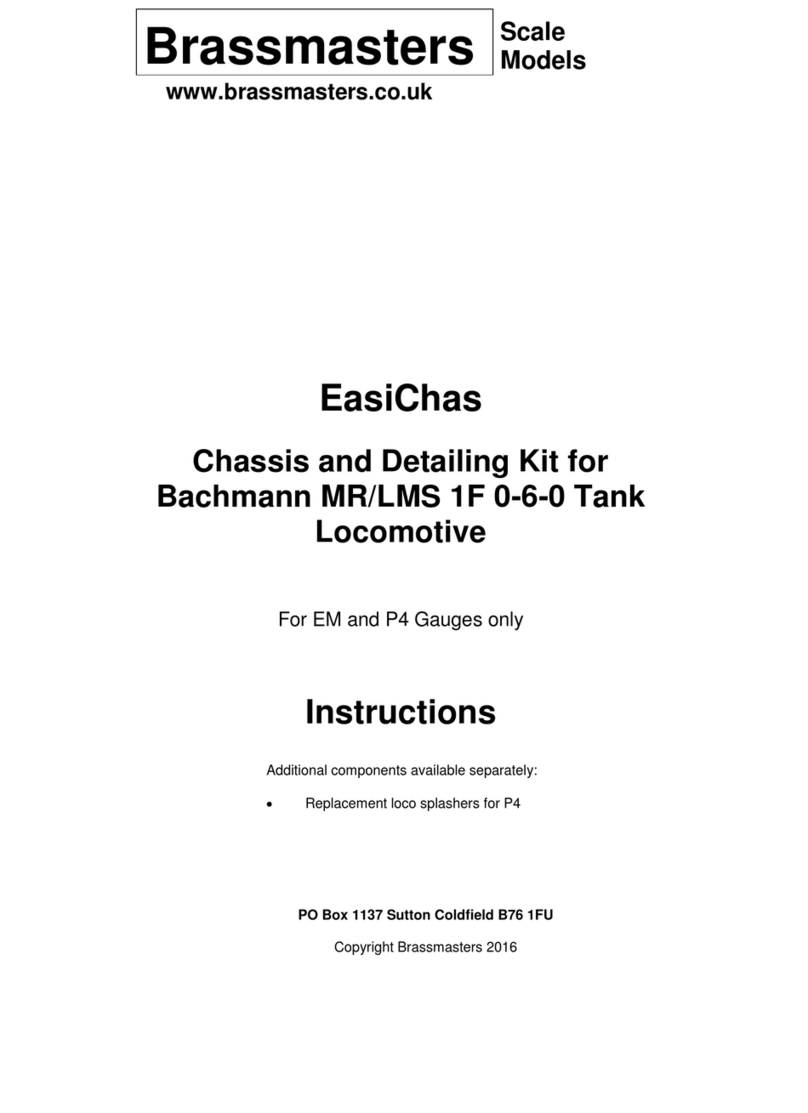
Brassmasters
Brassmasters EasiChas User manual
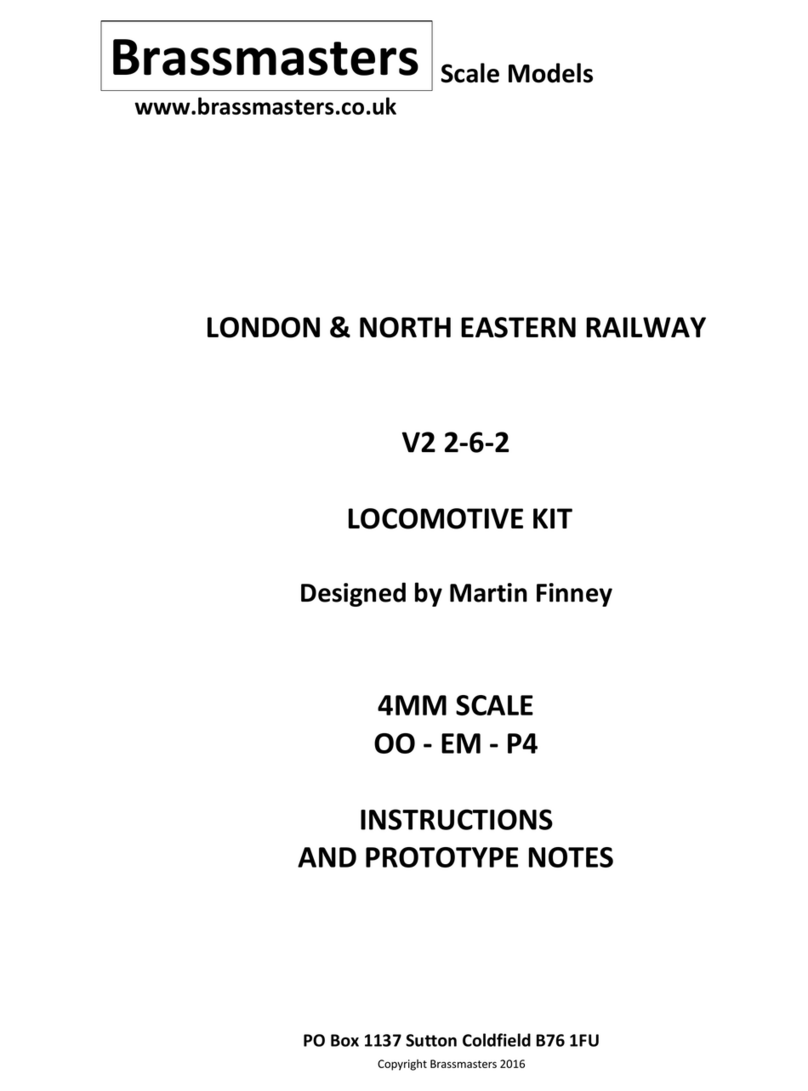
Brassmasters
Brassmasters LNER V2 2-6-2 User manual

Brassmasters
Brassmasters BULLDOG User manual

Brassmasters
Brassmasters EasiChas User manual
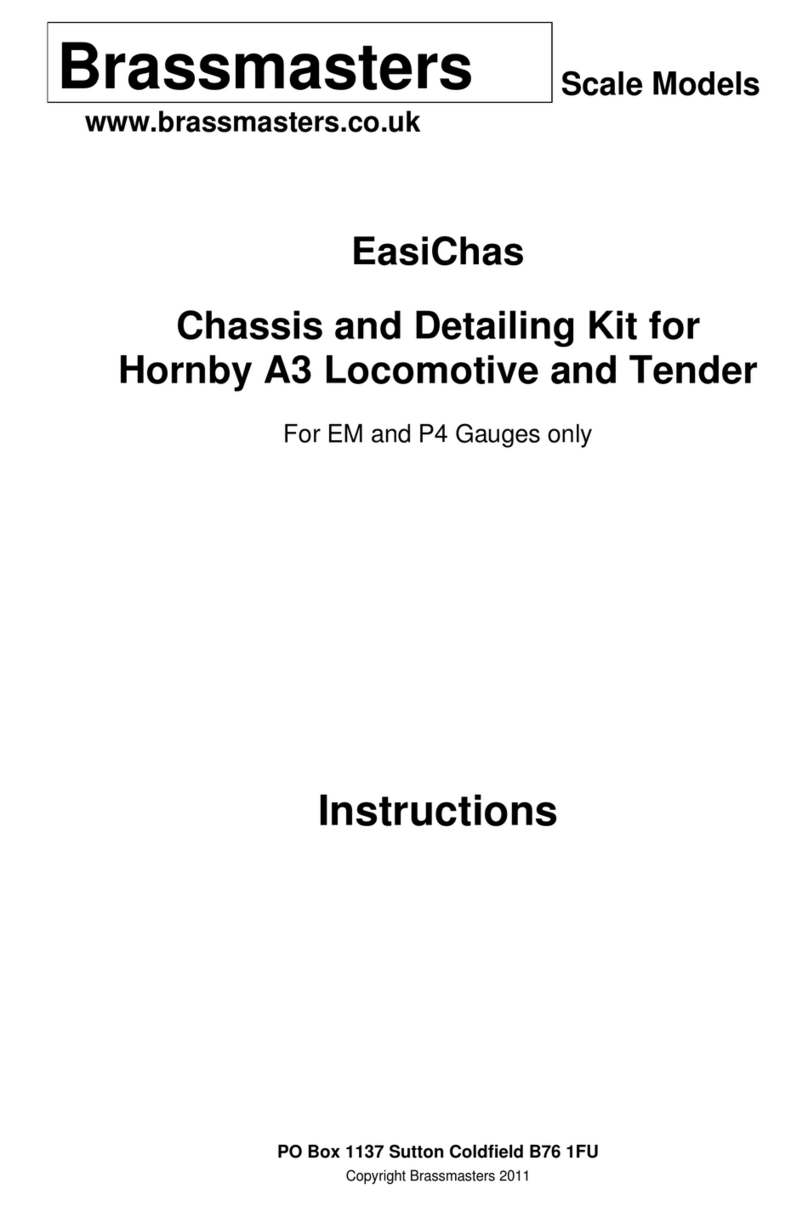
Brassmasters
Brassmasters EasiChas User manual

Brassmasters
Brassmasters GWR 3000 User manual
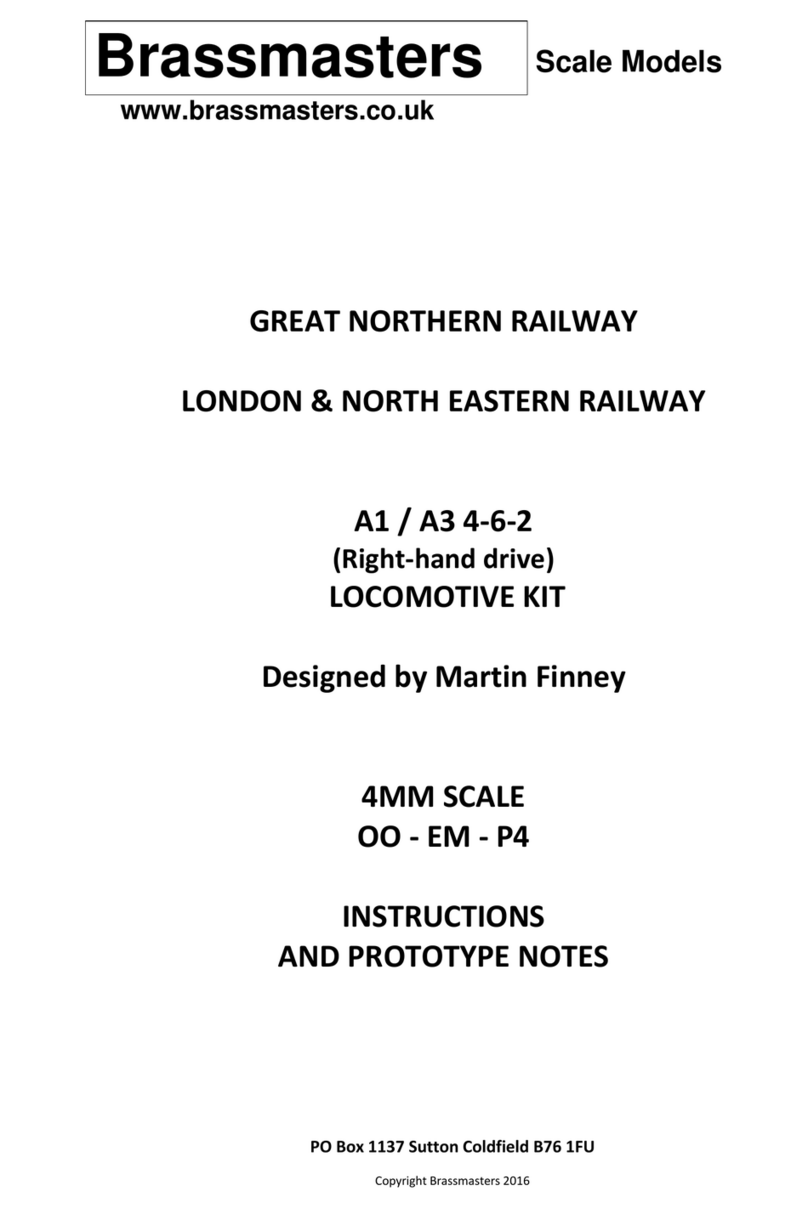
Brassmasters
Brassmasters A1 4-6-2 User manual
Popular Toy manuals by other brands

Top Flite
Top Flite Giant Scale Gold Edition P-51D Mustang manual
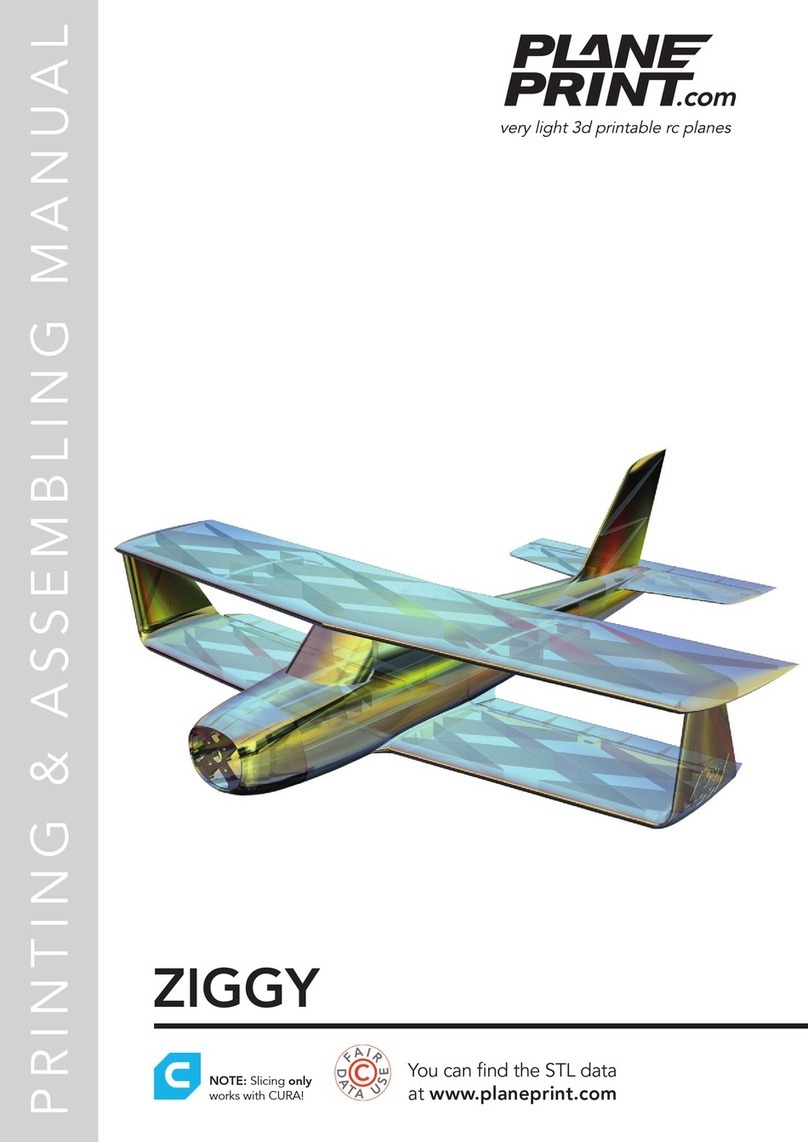
PLANEPRINT
PLANEPRINT ZIGGY Assembling manual

PLANEPRINT
PLANEPRINT Slingsby T31 Cadet Assembling manual
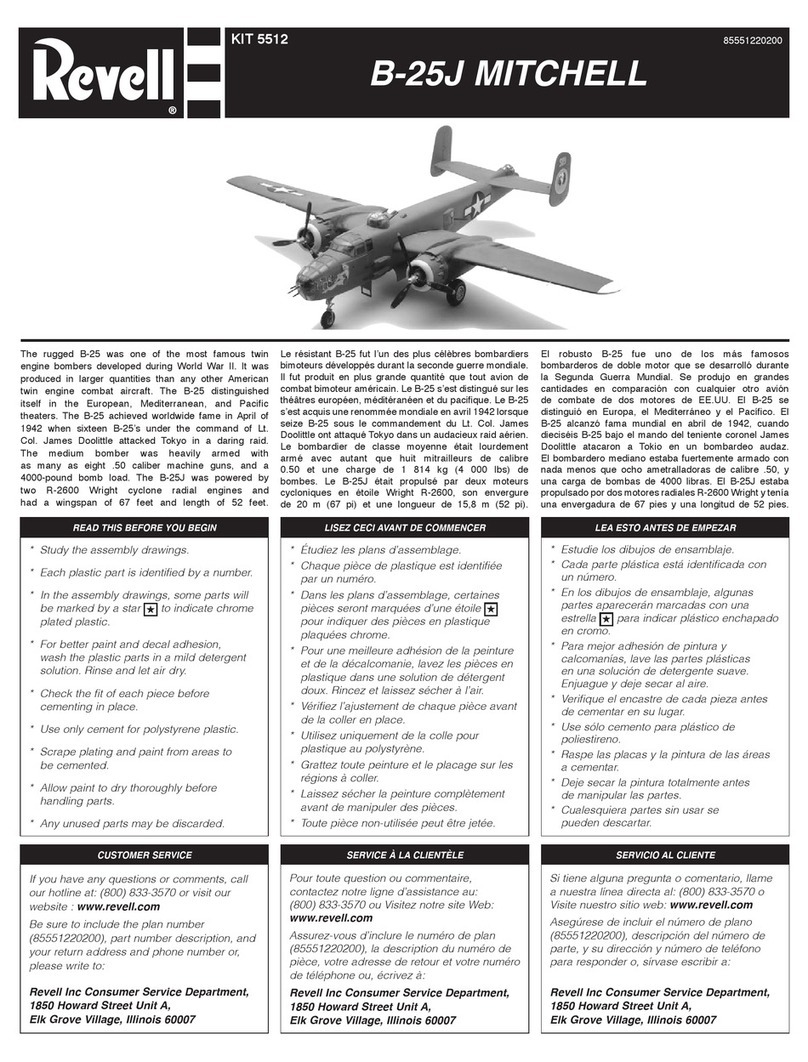
REVELL
REVELL 5512 manual
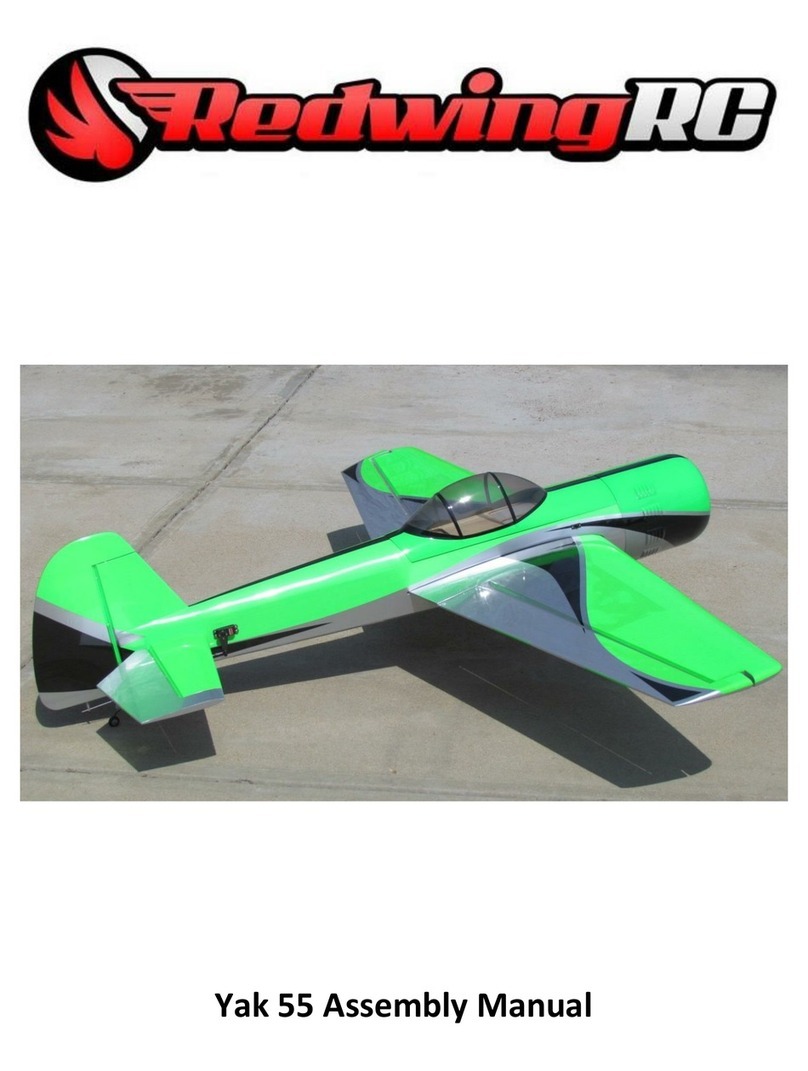
RedWing RC
RedWing RC Yak55 Assembly manual
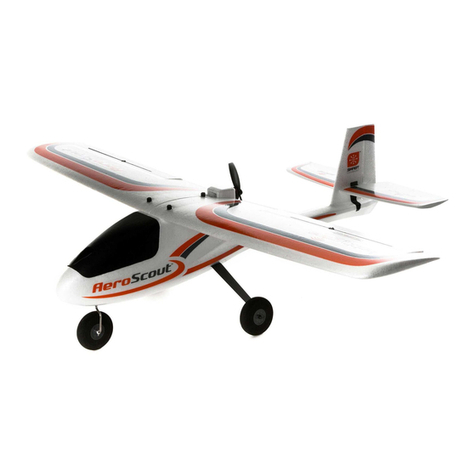
Horizon Hobby
Horizon Hobby HobbyZone AeroScout S 2 1.1m Trainer instruction manual


